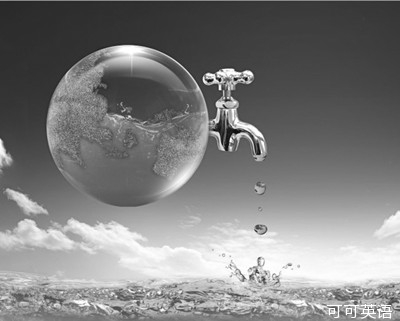Since 1900, the U.S. has pulled enough water from underground aquifers to fill two Lake Eries. And in just the first decade of the 21st century, we've extracted underground water sufficient to raise global sea level by more than 2 percent. We suck up 25 cubic kilometers of buried water per year.
自1900年起,美國從地下蓄水層抽的水足夠填滿兩個伊利湖。僅在21世紀第一個10年內,人類抽取的地下水足夠讓海平面上升2%。每年我們要消耗25立方公里的地下水。

That's the message from the U.S. Geological Survey's evaluation of how the U.S. is managing its aquifers. Or mismanaging. For example: water levels in the aquifer that underlies the nation's bread basket have dropped in some places by as much as 160 feet.
這就是美國地質調查局對美國如何管理地下水進行評估后傳達的信息。也可以說水資源管理不善。例如:位于國家糧倉之下的地下蓄水層的某些地方的水位已經下降了160英尺。
The rest of the world isn't doing any better. A conference of water scientists just issued the so-called Bonn Declaration, which declares that this lack of foresight will cause the majority of people alive in 2050 to face "severe" freshwater shortages.
世界上其它的地方也好不到哪去。科學家們在記者會上發布了所謂的伯恩宣言,聲明這種缺乏遠見的做法會讓2050年的人類陷入嚴重的飲用水短缺危機中。
Mismanagement of water resources is a hallmark of this new human-dominated era in the Earth's geologic history, known as the Anthropocene. Despite building, on average, one large dam every day for the last 130 years, we use more water than we store. And we're letting that freshwater escape to the seas. Which means we may find ourselves with water, water everywhere, but not much fit to drink.
水資源的管理不善是地球地質歷史(稱作人類紀)上新人類統治時代的一個標志。過去130年人類平均每天建立一座大壩,即使這樣人類使用的水比儲存的更多。我們在讓淡水匯入海洋,這將意味著我們身邊到處是水,但都不適合飲用。












